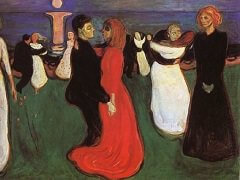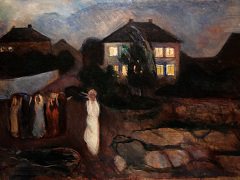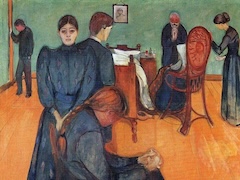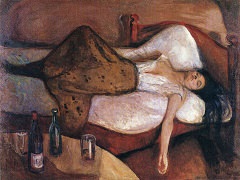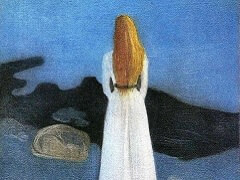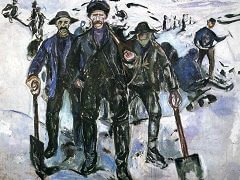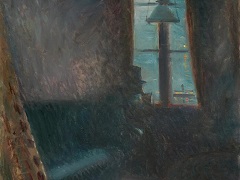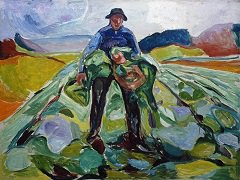Ashes, 1894 by Edvard Munch

For sheer beauty this work ranks high in Munch's oeuvre. As a static tableau of the mind, it shows the influence of the French synthetist painters. But its looser contours, sometimes doubled, rich somber colors, and lack of primitivist stylization give it a life and atmosphere rarely found in their work.
When lovers are consumed by the hot flame of passion their love turns to ashes. That clearly is the meaning indicated by the title. The elements comprising the scene, however, suggest a more ambiguous and complicated content. Sexual activity over, the lovers have separated. The man, in averted profile, cowers in grief or fear while the woman stands erect and faces the front, her white dress not yet buttoned up to conceal her sensual red undergarment. She fixes her hair, whose flowing tresses still rest on the man, forming the contour of his head and shoulders and showing that she still dominates him. Most mysterious is the horizontal form at the bottom combined with the vertical border on the left with its undulating, perhaps flame-like, lines. These elements may be intended as a symbolic border such as Munch used in the Madonna. About another picture he wrote of 'the forest which sucks its nourishment from the dead.' If this be accepted as a clue, what this border represents, following Munch's way of thinking, is a stream of sperm sucked up by a tree, the next beneficiary of death following love in the cyclical process of biological immortality. The man buries his anguish in the corner between the stream and the tree, framed by its vertical and that of the woman, to whom the hair links him. The tall trees in the forest behind also show markings that might suggest drops of liquid.
It might be noted that nothing obviously resembling ashes can be seen. In the title Munch refers to a metaphor but, except possibly in the flame-like tree, ignores it in the picture, instead using a more direct symbolism for a more comprehensive idea.



